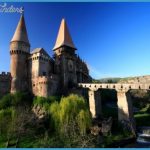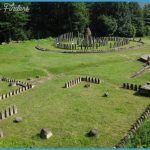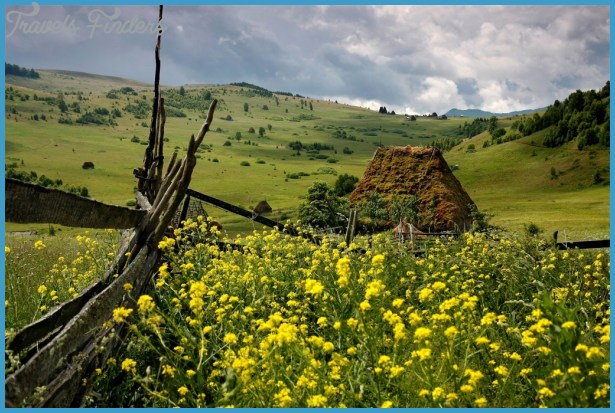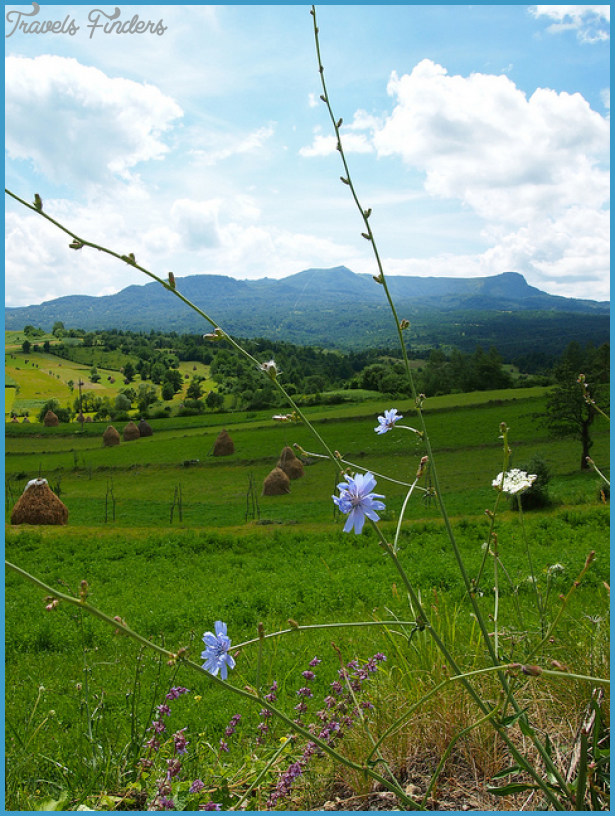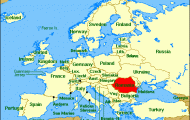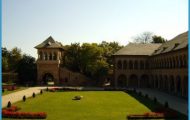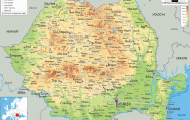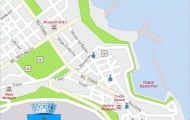Holy places in Moldavia and Bucovina Putna Monastery
Situated in-between the Obcinele Bucovinei, at a 70 km distance from Suceava and a 32 km distance from Radauti, this is the most representative edifice built by Stefan cel Mare. According to the Moldavian Chronicle, the Moldavian ruler is said to have founded the Putna Monastery after the conquest of Chilia fortress, to “thank God for what was given to him”. Thus, the works at the church started in July 1466, on the site of an old wooden hermitage, and ended after three years. At that time, this was the largest church in Moldavia: 37m length, 15m width and 33m height. Due to the fact the monastery’s main destination was to become a princely necropolis, Stefan cel Mare gave special attention to architectural and cultural progress of the edifice. In 1473, there were built a princely residence and a treasury tower in the Western part of
Sucevita Monastery -Suceava county Dragomira Monastery -Suceava county Romanian churches and monasteries
Shrine in Maramures area the complex, and, in 1481, an enclosure wall with the adjacent strongholds. Moreover, the ruler brought here famous calligrapher artists from Neamt Monastery, founded an expensive embroidery workshop, and other workshops for holy paintings, and wooden and stone sculptures. This is the oldest monastery in Bucovina, which functioned constantly ever since it was founded, despite the events from which it suffered throughout the ages.
Voronet Monastery
In 1488, the Moldavian ruler Stefan cel Mare built the church of the Voronet monastery. The construction represented one of the first Moldavian creative elements showing a distinctive style. The church is a combination of Byzantine, Gothic and local elements. The interior paintings preserve the iconographic complex dating back to the time of Stefan cel Mare. The exterior painting on the Western wall depicts, on five registers, the Doomsday scene, unique in the whole world. The Voronet Monastery entered the universal cultural heritage also owing to the paintings having in their composition the inimitable “Voronet blue”.
Moldovita Monastery
The construction dates back to the 14th century, when’a large number of hermits who lived in those places built initially a small wooden church. The present-day church has trefoil plan, walls covered with frescos, this being one of the oldest Romanian art monuments. In the monastery’s museum there can be found a collection of holy and antique objects: vases, icon lamps, embroideries, manuscripts and icons.
Traveling in Romania Photo Gallery
Sucevita Monastery
The monastery’s first church was built between 1582 and 1584 by an aristocratic family. The church combines Byzantine and Gothic art elements. The painting brings new elements, such as a tendency towards the narrative, with an educational purpose, and the exterior painting on the North wing shows the ladder of virtues which present the fight between good and evil. The museum has a collection of objects which includes: valuable embroideries dating to the 15th and 16th centuries, adorned with pearls and gold, silver and silk threads.
Agapia Monastery
In the second half of the 14th century, the hermit Agapie founded first a small wooden church, rebuilt in 1527 by the Moldavian ruler Petru Rares. The great church of the monastery has a three-conical plan, semi-circular apses, a simple roof and a slender steeple on an octagonal base. It was painted by the greatest Romanian painter, Nicolae Grigorescu, in the neoclassic style. The monastery’s museum is located in the house of the writer Alexandru Vlahuta, and among various holy objects there are embroideries, holy paintings, manuscripts, old books and other religious objects.
Neamt Monastery
The church of Neamt Monastery was built by the Moldavian ruler Petru I Musat, this being a stone edifice made in a unique architectural style which combines basic elements from the edifices of Stefan cel Mare with newer elements. The painting in the nave and porch represent extremely valuable artistic and historical creations. The museum founded in 1916 preserves objects of interest: old manuscripts, the Book of the four Gospels dating back to the 14th century, etc. Neamt was also the school site for calligraphers and miniature painters, and the library comprises 11,000 volumes, 549 of which are manuscripts.
Varatec Monastery
This monastery was built in 1808 out of stone and brick. It was first painted in 1841 with frescos in the neo-Byzantine style. At the monastery’s museum you can see original royal charters, holy objects, old religious paintings, etc.
Bogdana Monastery
An architectural monument, this monastery was built by the ruler Bogdan Voda (1359-1365). The church was disestablished in 1775, when it was turned into a vicarage, and it was reopened in 1992. It is the first stone edifice in Moldavia which combines the attributes of Roman basilicas with the particulars of Byzantine style.

